#yellow staghorn fungus
Text

Cambridge, UK, October 2023
Yellow staghorn fungus (Calocera viscosa)
I always find these pretty little things are more orange than yellow when young, then their colour pales a little as they mature.
168 notes
·
View notes
Text
Xerneas and Yveltal are Fungi: Let Me Explain...
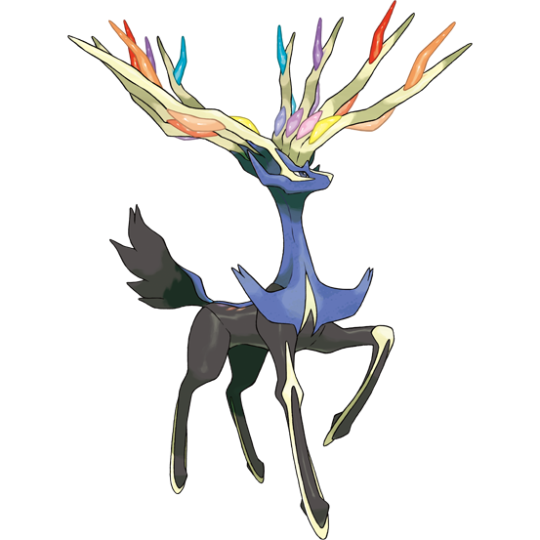
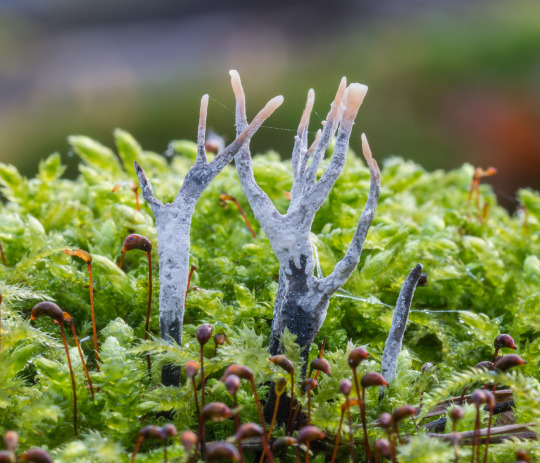

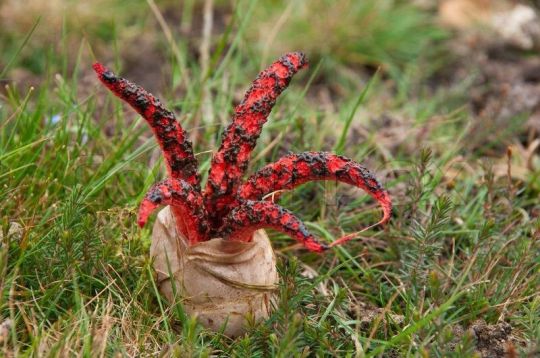
Source: Bulbapedia, Wikipedia, Bulbapedia, Enchanted Nature
Xerneas and Yveltal are my favorite legendary designs. There's something weirdly alien about these bio-luminescent approximations of fauna, like they're trying to look like animals and failing. I've always thought they looked a little bit...fungal.
Xerneas and Yveltal are like batteries. They're life energy brokers; Xerneas distributes life, while Yveltal drains it. Supporting and draining life is one of the main characteristics of fungi. In fact, it's like their whole thing.
Some fungi have a mutualistic relationship with their hosts, where they actually benefit their health. And in general, fungi are essential to supporting the ecosystem. Then there's fungi that are simply parasitic.
Fungi can also go dormant, as well as their spores. Staying still is their thing, just chilling in dark places. Xerneas and Yveltal's dormant forms are especially weird, showing just how anomalous these creatures are.
Now allow me to lichen fauna to fungi.
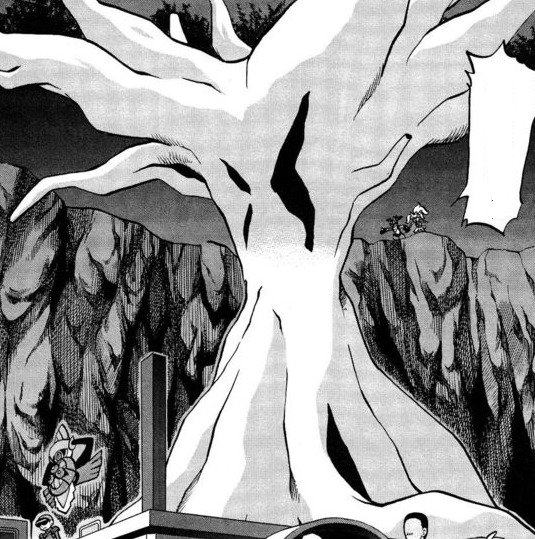
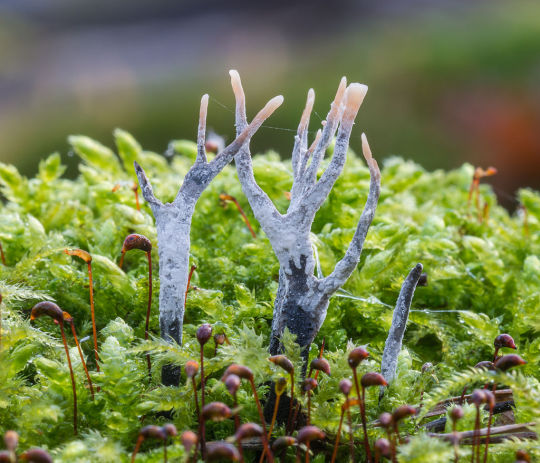
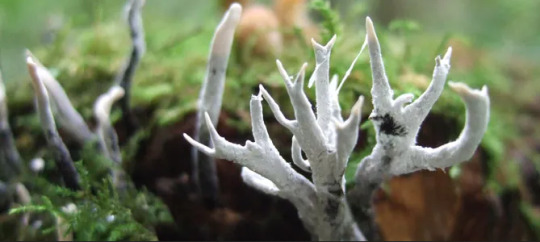
Sources: Bulbapedia, New Forest Pics, Wikipedia, Mushroom Diary Blog
This is xylaria hypoxylon, also known as Stag's Horn fungus. (Not to be confused with Yellow Staghorn.) It reminds me a lot of the dormant form of Xerneas, or the "deactivated" form it takes in the PC.
Stag's Horn is also bio-luminscent, which means the tips of the fungus faintly glow - much like the tips of Xerneas's antlers.
Speaking of the first legendary Fairy Pokemon, mushrooms are often associated with fairies. Fairy Rings are circles of mushrooms that are connected by mycelium underneath. (I'll get into mycelium in just a second.) There are too many myths about Fairy Rings to get into here, so for now I'll just point out the Fairy Ring around Valerie's Gym in Laverre City.
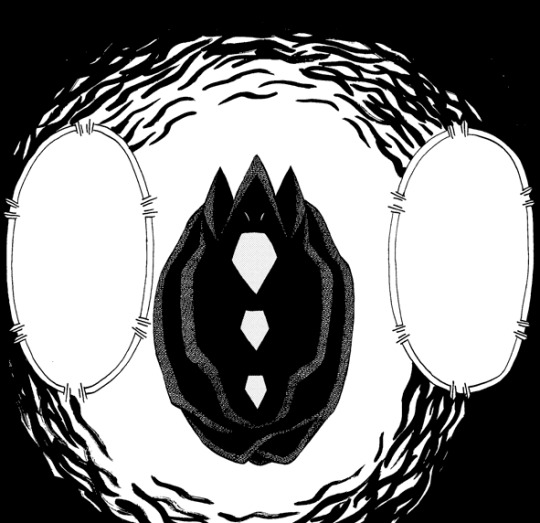
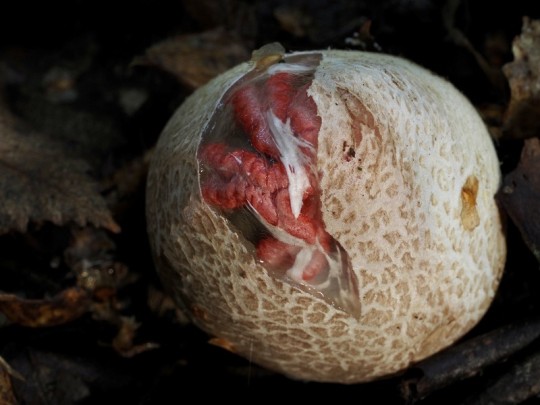


Sources: Bulbapedia, Sussex Wildlife Trust, Enchanted Nature, UK Wildlife
I'm not sure whether Bulbapedia or Dr. King on Pokemon Amino first likened Yveltal to Devil's Fingers, but the similarities are uncanny. Like Yveltal emerges from its cocoon, Devil's Fingers emerge from what is called their "egg stage". I tried to find the least unsettling picture of this that I could. Enjoy...?
I mean, what kind of bird turns into a cocoon, anyway? Honestly though, fungus isn't supposed to hatch from an egg either, so this is all mixed up.
Okay, so Xerneas and Yveltal are based on different aspects of Yggdrasil. But if you were going to design Pokemon based on Yggdrasil, the World Tree that connects the universe, wouldn't you base it on fungi rather than an actual tree? Mycelium can actually partner with the roots of plants and other fungus to create a widespread beneficial mycorrhizal network, a truly interconnected ecosystem of organisms.

Source: BBC News - How Trees Secretly Talk to Each Other
And that's why Xerneas and Yveltal are fungi. Or it could be part of their inspiration, at least. They're not necessarily inspired by these specific fungi, but I think the concept may be part of their design. Either way, Gen VI is especially fun to research!
Reviewed by @fluffybunnybadass.
Check out my posts about Pokemon Legends: Z-A:
Poll: What Does the Λ in Legends Z-A Symbolize?
Pokemon Legends Z-A: What Is the Λ?
Is Z-A Just Zygarde-A? (%1000 Zygarde and the Fragments of the Tree of Life)
Aaah, it's an A! Is the A in Z-A the Tree of Life?
How much longer am I going to have to wait for a freakin' Unova remake?!
#Pokemon Y#Pokemon X#cw: fungus#Yveltal#Xerneas#Pokemon Legends: Z-A#Pokemon Legends Z A#Pokemon games#Pokemon#Kalos#gaming#Pokemon XY#Generation 6#Generation VI#Generation VI Pokemon#Video games#Z-A#Devil's Fingers#Octopus Stinkhorn#fungi#wild fungi#fungus#Stag's Horn#Candlesnuff#mycelial network#mycelium
49 notes
·
View notes
Photo

Almindelig guldgaffel (Calocera viscosa)
Yellow Staghorn (Calocera viscosa)
#Almindelig guldgaffel#Calocera viscosa#Calocera#Guldgaffel#Yellow Staghorn#Staghorn#Fungus#Svamp#Mushroom#Yellow#Gul#Pine forest#Nåleskov#Blåbærhøj#Efterår#Autumn#Fall
52 notes
·
View notes
Photo

Yellow Stagshorn or Antler Jelly. I love how they look lile tiny little flames under a Petrify spell !
#mushrooms#fungi#calocera#calocera viscosa#yellow staghorn#antler jelly#jelly fungus#Forest#forest spirit#enchanted#woodland#woods#wandering#into the woods#into the forest#vintage lens#calocère
12 notes
·
View notes
Photo

Yellow staghorn jelly fungus :)
©wano
34 notes
·
View notes
Note
Hello! List 5 things that make you happy, then put this in the ask box for the last 10 people who reblogged something from you! Learn to know your mutual and followers! :D
1. yellow staghorn fungus
2. calling mcdonalds ‘dickmondalds’ i do not know why it is so funny
3. golden tortoise beetle, any kind of tortoise beetle rly
4. the entire tally hall discography
5. vine kids putting objects on their head to signify that they were their mom
0 notes
Text
Foraging Information
To be included in small booklets on each page.
Foraging Tips
Wild Leeks (Allium tricoccum)
Features
Large, dagger shaped green leaves
Red and white stem
White bulb with roots in the ground
Onion-y aroma
Habitat
Grow among hardwoods, need some sunlight
Cooking Notes
Edible raw or cooked
Look a-Likes
Lily of the Valley – Thicker, waxier leaves, no onion smell, eventual white hanging flowers with floral odour, poisonous – do not ingest
How to Harvest
Ramps take seven years to grow from seed to mature plant, and because of this slow growth the improper harvesting of ramps has decimated populations in some areas. To sustainably harvest ramps, dig slightly into the ground and cut the bulb off right above the roots, leaving the roots intact and in the ground. This allows them to regrow the following season. Even more sustainably, just cut off one leaf from each plant. Never harvest more than 10% of the plants in one area.
Fiddleheads (Matteuccia struthiopteris)
Features
Bright green, tightly curled sprouts of the Ostrich fern
Multiple fiddleheads grow out of one crown/mound on the forest floor
Covered in a brown, papery coating that falls off with age
Deep, U-shaped groove up the stem
A dead, brown fern frond often remains on the crown throughout winter
Habitat
Hardwood canopies near rivers or stream beds
Moist areas but not submerged
Grow best in shade or dappled lights
Cooking Notes
Must be thoroughly cooked, steamed, or blanched before eating
Look a-Likes
There are many types of ferns that are not edible. Do not eat any that are furry, or the brown papery coating is difficult to remove, or there is no or only a slight groove in the stem.
How to Harvest
Harvest fiddleheads while they are between 6-15cm, only picking while fiddleheads are tightly coiled
Can be cut or snapped off
Only harvest 1/3 of the fiddleheads from each crown, or else it is possible the plant may be damaged or die and not regrow the following year. Do not harvest from crowns that have less than 4 fiddleheads growing from it.
Morels (Morchella sp.)
Features
Cap colour ranges from blond to black
Caps are fairly uniform, with ridges and inward pits (honeycomb-like)
Hollow inside from the tip of the cap to the bottom of the stem
Cap is attached directly to the stem
Spore print is light coloured, cream to pale yellow
Habitat
Grow in areas where there are ash, aspen, elm, oak, and apple trees
Grow naturally in pastures, meadows, and orchards, and often appear the spring after a forest fire
Cooking Notes
Cook thoroughly before eating. Avoid soaking or cleaning with too much water, a brush or damp cloth will suffice.
Look a-Likes
Verpa Bohemica – cap is not attached directly to the stem, cap hangs over stem like a skirt. Stem is filled with a cotton-like fluff. Edibility is debated.
Gyromitra species – convoluted cap but no real pits, more wavy. Wider than it is tall. Cap is red, stem is not hollow. Edibility is debated.
Verpa Conica – small, only slightly ridged cap. Cap has skirt-like attachment to stem. Questionably edible.
How to Harvest
Pull or cut from ground (cutting is cleaner).
Daylilies (Hemerocallis fulva)
Features
4 parts of the daylily can be eaten: shoots, tubers, buds, and flowers
Shoots are green, sword shaped leaves that unite in a cylindrical shape at the bottom
Tubers are under ground, small, light brown, whitish flesh
Buds appear before the flower, green, yellow, orange, and cylindrical
Flowers are orange, funnel shaped, growing from an unbranched stem. 6 ruffled petals are mainly orange but also show red and orange.
Habitat
Grow in cultivated habitats, gardens, roadsides, riverbanks, parks, open woodlands and meadows.
Avoid picking daylilies that are next to busy roadsides, as the plant can absorb chemical runoff from the road.
Cooking Notes
Chop up shoots and saute
Cook tubers like a potato
Steam, boil, stir fry or pickle buds
Flowers can be eaten raw, dried, or cooked.
Warning: some people experience intestinal distress when eating daylilies, especially raw, so always sample a small amount first and wait before consuming larger quantities
Look a-Likes
Tiger Lily (Lilium tigruinum) –flowers are spotted, and stem bears many leaves. Do not ingest
Iris shoots may resemble day lily shoots, but the iris leaf arrangement is much flatter and the plant does not have tubers
Cultivated daylilies have many genetic variants to produce different coloured flowers, and edibility is questionable. Stick to the common orange flowers.
How to Harvest
Young shoots (less than 10cm) can be cut off just above soil level to be eaten.
Tubers can be dug up from late fall to early spring. Don’t remove all tumors from a clump if you would like the plant to come back.
Buds can be picked while still green, closed, and firm.
Flowers only last one day, and can be cut and used while open
Black raspberries (Rubus occidentalis)
Features
Berries ripen from green to red to deep purple/black
Smaller fruits than blackberries
Hollow core (like a raspberry) when plucked off the stem
Grow on large, thorny brambles
Leaves have whitish underside
Habitat
Grow in disturbed areas—logging roads, open woods, edges of meadows, streams, lakes, trails, and roads
Cooking Notes
Can be eaten raw
Look a-Likes
Raspberries, blackberries, thimbleberries, and dewberries all look similar to the black raspberry, but fortunately for us, all these berries are edible
How to Harvest
Wear long pants and if you can tolerate the summer heat, long sleeves. Berries can be extremely thorny.
Pluck berry off stem, should be able to be removed easily if ripe. Collect in a bucket
Staghorn Sumac (Rhus typhina)
Features
Upright, cone shaped fruit cluster, with small, fuzzy dark red berries
Branches are covered in light, velvety fuzz
Large (1 to 2 feet), green, compound leaves, with oppositely placed leaflets. Leaflets have serrated edges
4 to 15 feet tall, highly branched
Habitat
Hardy, grows in open areas –roadsides, forest edges, clearings
Full sun, tolerates most soil types
Cooking Notes
Can be dried like any spice, or made into a tea or syrup
Look a-Likes
Poison sumac (Toxicodendron vernix) – should not be touched, let alone eaten. Key distinguishing feature is white-green berries.
How to Harvest
Cut off fruit clusters at their base with a knife or sheers
Do not harvest immediately following rain, as flavour diminishes
To find the best drupes, flavour can be tested by rubbing berries between fingers and licking fingers
Do not harvest from highly trafficked roadsides
Riverbank Grapes (Vitis riparia)
Features
Climbing, multi-stemmed, woody vine with forking tendrils and sticky discs that can envelop trees and bushes
Grape vines are thicker and higher than most vines
Deeply lobed, dark green leaves, similar to cultivated grapes. Heart shaped at base. Leaves should also taste like grapes
Fruits grow in hanging clusters that are blackish, dark blue, or purple, often with a powdery coating
Habitat
Grow along roadsides, fences, trail edges, and riverbanks. Need sun to grow.
Cooking Notes
Grapes and leaves can be eaten raw or cooked
Grapes contain large seeds, so they are generally more pleasant to juice or make into jelly than eaten whole
Look a-Likes
Moonseed (Menispermum canadense) – similar leaves, however fruit contains a single flat seed, instead of a round seed like the grape. Grows in shaded areas, and tendrils do not have sticky discs. All parts of this plant are poisonous.
Virginia Creeper (Parthenocissus sp.) – has compound leaves with 3 to 7 leaflets on each leaf, instead of single leaf like the grape. Not poisonous, but not pleasant.
How to Harvest
Grapes have sweetest flavour after the first frost. Cut bunches off tree right above fruit cluster, removing any bad/old/wrinkled grapes
Apples (Malus sp.)
Features
Deciduous tree growing 6 to 15 feet tall
Leaves are alternatively arrange, simple green ovals
Fruit can be 1 to 4 inches in diameter, ranging from yellow to green to red
Habitat
Well drained nutrient rich soil and moderate sunlight, can stand alone on roadside or in groups in forest groves.
Cooking Notes
Can be eaten raw, however many wild apples are very astringent and better suited for cider
Look a-Likes
None
How to Harvest
Remove apple from tree by twisting fruit
Fallen fruit may be harvested from the ground, as long as not too old and rotten
Chicken of the Woods (Laetiporus sp.)
Features
Bright orange, fan shaped bracket fungi, often growing in a shelf formation
Smooth or wrinkled
Yellow or white underside, no gills, just small round pores
Flesh is thick and soft
White spore print
Habitat
Grows on dead or dying hardwood trees, commonly oak but also cherry and beech
Cooking Notes
Must be thoroughly cooked
Some people experience intestinal distress when eating, so sample small amount first
Look a-Likes
Few look-alikes, ensure underside is yellow or white with pores
How to Harvest
Use a knife to cut fungus off tree
Remove tough stem part
Older specimens may be entirely tough and not pleasant to eat
0 notes
Photo

Barnet, London, UK, September 2019
Yellow staghorn (Calocera viscosa)
My next tiny but exciting find of the walk was this baby coral fungus, which has not yet grown enough to develop the branched tips for which it is known. Mature specimens can be up to 10cm tall, and look wonderfully like tiny orange antlers.
#mycology#mushrooms#fungi#tiny fungi#wild fungi#wild mushrooms#yellow staghorn#yellow staghorn fungus#Calocera viscosa#Coral Fungus#coral fungi#calocera#inedible fungi
32 notes
·
View notes
Photo

2 notes
·
View notes
Photo




Barnet. London, UK, December 2018
Yellow staghorn fungus (Calocera viscosa)
A tiny alien landscape of Yellow staghorn surrounded by an impressive collection of slime moulds.
#mycology#fungi#wild fungi#yellow staghorn#yellow staghorn fungus#inedible fungi#slime mould#slime mold#various fungi
60 notes
·
View notes
Photo

Almindelig guldgaffel (Calocera viscosa)
Yellow Staghorn (Calocera viscosa)
#almindelig guldgaffel#Calocera viscosa#Calocera#Yellow staghorn#Guldgaffel#Staghorn#fungus#mushroom#svamp#efterår#fall#autumn#Blåbærhøj#skov#forest#gran#pine#fir
2 notes
·
View notes
Photo

High Wycombe, UK, October 2018
Yellow Staghorn (Calocera viscosa)
These are young fruiting bodies of the yellow staghorn - as they grow, the tendrils will branch into patterns remarkably reminiscent of antlers.
This fungus is tasteless and insubstantial, but some sources do list it as an acceptable edible.
#mycology#mushrooms#fungi#wild mushrooms#wild fungi#yellow staghorn#calocera#calocera viscosa#edible fungi#yellow fungi#orange fungi#beautiful fungi
45 notes
·
View notes
